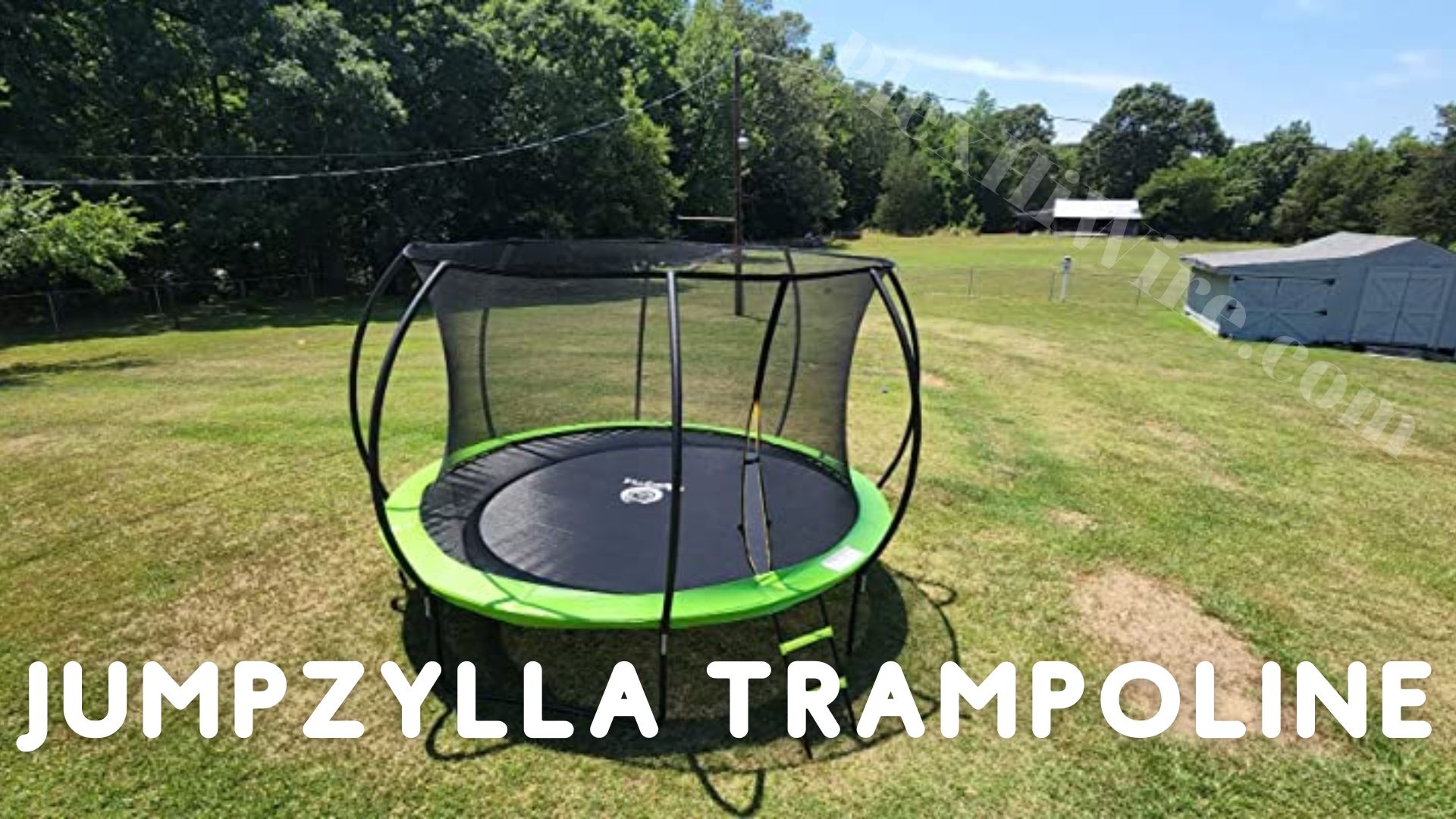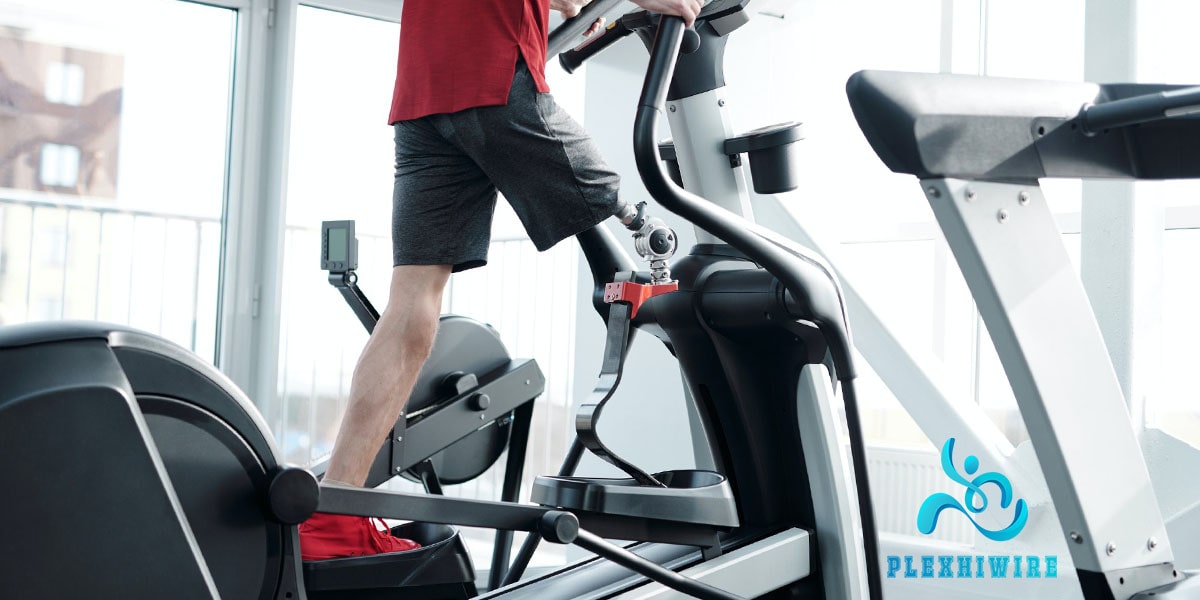Comparison of Exercise Bike Belt Drive vs Chain Drive
When it comes to choosing the right exercise bike, you’ll want to consider both your workout needs and your lifestyle. One important decision you’ll need to make is whether to go with a belt drive vs chain drive mechanism. While both models have their own advantages, understanding how each motor works and which one best meets your fitness goals can help narrow down your options significantly. In this post, we’ll look at the differences between belt drive and chain drive mechanisms in order to equip you with the knowledge needed for making this important purchase decision.
Making the choice between an exercise bike belt drive or a chain drive can be overwhelming, but ultimately it boils down to understanding what type of workout you want and how much maintenance you’re prepared for. Exercise bikes are popular pieces of equipment that are perfect for getting in shape without having to leave your home – making them especially tempting during times when leaving the house isn’t ideal. Whether your goal is weight loss or improved cardiorespiratory health, knowing which type of drive system will work best for you is crucial. So keep reading to get all the details on why a belt or chain drive may be right for your needs!
- Comparison of Exercise Bike Belt Drive vs Chain Drive
- What are the Differences Between a Belt Drive vs Chain Drive on an Exercise Bike?
- What are the Pros and Cons of Belt Drive Compared to Chain Drive?
- What Factors Should You Consider When Choosing Between the Two Types of Drive Systems?
- Tips for Maintaining an Exercise Bike to Maximize its Lifespan
- Which Type of Exercise Bike is Better for Beginners – Belt vs Chain Drive Bikes?
- Why Would You Use a Belt Drive Instead of a Chain Drive?
- Are Belts Stronger Than Chains?
- Is a Belt Drive Bike Better?
- How Often Do You Need to Replace the Belt on a Belt-Driven Exercise Bike?
- Frequently Asked Questions
- Conclusion
What are the Differences Between a Belt Drive vs Chain Drive on an Exercise Bike?
Belt drives vs chain drives are two different methods of transferring power from the pedals to the flywheel on exercise bikes. Both belt drives and chain drives have advantages and disadvantages, and understanding the differences between the two can help you make an informed decision when selecting an exercise bike.
Belt drives are becoming increasingly popular in modern exercise bikes for their silent operation, low maintenance requirements, and smooth pedaling experience. They are made of rubber or a combination of rubber and plastic and are designed to be durable yet flexible. Belt drives have a number of advantages over chain drives. They are quieter, require less maintenance, and do not need lubrication. They also have the advantage of providing a smoother pedaling experience, as the belt absorbs vibrations and provides a more consistent power transfer.
Chain drives, on the other hand, use a metal chain to transfer power from the pedals to the flywheel. They are the more traditional form of power transmission and have been used on exercise bikes for many years. Chain drives are still popular in certain exercise bike models due to their durability, simplicity, and affordability. They are generally cheaper to manufacture than belt drives, making them a cost-effective option for consumers.
However, chain drives also have some disadvantages. They are generally noisier than belt drives, which can be distracting during a workout. Chain drives also require regular maintenance, including lubrication, to prevent rust and prolong the lifespan of the chain.
In summary, the main differences between belt drives and chain drives on exercise bikes come down to noise level, maintenance requirements, and the smoothness of pedaling. Belt drives are quieter and require less maintenance, making them a popular choice for consumers looking for a hassle-free workout experience. Chain drives, on the other hand, are more durable and affordable, making them a good option for those on a budget or requiring a more robust power transmission system. Ultimately, the choice between the two depends on personal preference and workout goals.
What are the Pros and Cons of Belt Drive Compared to Chain Drive?
Belt drive and chain drive are two mechanisms that are used in various applications, including automobile and industrial machinery. Both of them have their own set of advantages and disadvantages, depending on the intended use. Below are some of the pros and cons of belt drive compared to chain drive.
Pros
Noise Reduction: Belt drives make significantly less noise compared to chain drives. This is because they are made of flexible materials that absorb noise and vibration, making them ideal for applications that require minimal noise.
High Efficiency: Belt drives have greater efficiency compared to chain drives. This is due to the fact that belt drives are designed to have fewer moving parts, which leads to less friction and energy loss.
Low Maintenance: Belt drives require less maintenance compared to chain drives. This is because they operate without the need for lubrication in most cases, which makes them more cost-effective and easier to use.
Longer Service Life: Belt drives have longer service life compared to chain drives. This is because they are not subjected to wear and tear like chains, which can lead to higher replacement and maintenance costs.
Cons
Limited Strength: Belt drives have limited strength compared to chain drives. This is because they are made from flexible materials that aren’t as strong as chains, which means they might not be suitable for applications that require high levels of power transfer.
Limited Speed: Belt drives may not be suitable for high-speed applications because they have a limited maximum speed. This is because belt drives are designed to be flexible, which can lead to slippage and damage to the system at high speeds.
Limited Resistance to Dirt and Moisture: Belt drives are sensitive to dirt and moisture, which can cause wear and damage to the belt. This means that they may not be suitable for use in environments that are exposed to dirt and moisture.
Belt Replacement: Belt drives are more difficult and time-consuming to replace compared to chain drives. This is because they require careful alignment and tensioning, which can be challenging and time-consuming.
See more: The Best Assault Bike Workouts for Total Body Conditioning
In summary, belt drives are suitable for many applications due to their low maintenance, low noise, high efficiency, and long life. However, they have some disadvantages, including limited strength, limited speed, susceptibility to dirt and moisture, and more challenging replacement. Before selecting a drive mechanism for your specific application, consider the advantages and disadvantages of both belt drives and chain drives to make an informed decision.
What Factors Should You Consider When Choosing Between the Two Types of Drive Systems?
When deciding between an exercise bike with a belt drive vs chain drive system, there are several factors that must be considered.
Firstly, the noise level is a critical aspect to think about. Typically, belt drive systems are more silent compared to chain drive systems. This is because the belt drive mechanism is designed with a rubber belt that operates with less sound as compared to the metallic chain of a chain drive system. If you plan to use your exercise bike in shared or crowded spaces, then noise level may play a significant role in the type of drive system you choose.
Secondly, the required maintenance or upkeep is another factor to weigh in. Chain drive systems need more lubrication and cleaning compared to belt drive systems. Chain drive systems may require frequent tightening and replacement of parts, such as the chain and sprocket, to keep them functioning correctly. On the other hand, belt drive systems do not need regular maintenance. Thus, if you prefer an uncomplicated machine with low maintenance needs, you may prefer belt drive over chain drive.
Another factor to consider is the overall fluidity of motion on the bike. Belt drive systems provide a smooth and constant motion, which may be preferred for more intense workouts. In contrast, chain drive systems may not offer the same level of fluidity and could be jerky, especially at higher resistance settings.
Cost is another factor. Generally, belt drive systems are more expensive than chain drive systems. While both systems have their maintenance and operational expenses, the initial cost of the bike may play a crucial role, especially if you are sticking to a budget. However, given the advantages of belt drive systems, many people are willing to pay a higher price for them.
Lastly, you need to consider the intended use and frequency of use. If you plan to use your exercise bike regularly or professionally, then a belt drive may better suit your needs. Belt drives are designed to provide consistent power and last longer than chain drives. However, if you are using an exercise bike less frequently or just for leisure, a less expensive chain drive system may suffice.
When selecting a type of drive system for your exercise bike, you should consider noise level, maintenance needs, fluidity of motion, cost, and frequency of use. Ultimately, it is your preference that will drive the decision.
Tips for Maintaining an Exercise Bike to Maximize its Lifespan
When it comes to exercise bikes, one of the most common questions people ask is how much maintenance each type of bike requires. This is a crucial question to ask because the amount of maintenance required can impact the long-term cost and performance of the equipment. In general, there are two types of exercise bikes: belt drive and chain drive.
Belt drive exercise bikes are becoming increasingly popular because they offer a range of benefits over traditional chain-drive models. First and foremost, belt-drive bikes are generally much quieter than their chain-drive counterparts. This is because they use a belt mechanism to transfer power from the pedals to the flywheel. The belt is typically made from a durable, high-quality material, such as rubber, which is resistant to wear and tear, and requires little to no maintenance.
Chain drive exercise bikes, on the other hand, require a bit more maintenance. The chain mechanism that transfers power from the pedals to the flywheel is a bit more complex and requires regular lubrication to ensure smooth operation. If the chain is not properly lubricated, it can become stiff and difficult to operate, leading to lower performance and potentially increasing the risk of injury. Additionally, the chain itself can wear down over time, requiring replacement and additional maintenance costs.
Overall, while both types of exercise bikes have their pros and cons, belt-drive bikes are generally considered to be easier to maintain and offer better long-term value. However, if you prefer the feel and performance of a chain drive bike, be prepared to invest a bit more time and money into maintaining it properly. Regardless of which type of bike you choose, regular upkeep and maintenance will go a long way in ensuring that your equipment performs at its best and lasts for years to come.
Which Type of Exercise Bike is Better for Beginners – Belt vs Chain Drive Bikes?
When it comes to choosing an exercise bike for a beginner, there are a few key factors to consider, and one of the most important is the type of drive system that the bike uses. Specifically, you’ll need to decide between a chain drive vs belt drive bike. So, which of these options is better for beginners, and why?
Let’s start with chain-drive bikes. These bikes use a metal chain to connect the pedals to the flywheel, which provides resistance and simulates the feeling of riding a real bike. Chain drive bikes are popular because they are relatively inexpensive and durable. They also tend to offer a more authentic road-biking experience, which can be appealing for some users.
However, chain drive bikes do have some downsides that might make them less suitable for beginners. For one thing, they require more maintenance than belt drive bikes. The chain needs to be oiled regularly to prevent it from rusting or wearing out, which can be time-consuming and messy. Additionally, chain drive bikes tend to be noisier than belt-drive bikes, which could be a distraction or annoyance for some users.
On the other hand, belt drive bikes use a reinforced rubber belt to connect the pedals to the flywheel. Because there are no metal components involved, these bikes tend to be much quieter and smoother than chain drive bikes. They also require less maintenance, since the belt doesn’t need to be oiled or adjusted like a chain does.
For these reasons, belt drive bikes are often recommended for beginners. They are generally more user-friendly and hassle-free, which can make the exercise experience more enjoyable and sustainable. Of course, individual preferences will vary, and some users may still prefer the feel of a chain drive bike. However, for most beginners, a belt-drive bike is likely the better choice.
Why Would You Use a Belt Drive Instead of a Chain Drive?
When it comes to choosing a drive system for various mechanical applications, one of the primary considerations is the type of transmission mechanism to be used. Belt drives and chain drives are two widely used transmission systems that have their distinct advantages and disadvantages.
Belt drives are a popular choice in many applications due to their numerous benefits. One of the significant advantages of belt drives over chain drives is that they require less maintenance. This is because belt drives do not require lubrication and oiling like chains. Chains need frequent lubrication and maintenance to prevent them from rusting, stretching, and breaking. On the other hand, belts are made of durable materials like rubber that resist wear and tear, making them require minimal maintenance over their lifespan.
Moreover, belt drives last longer than chain drives. Belts wear out at much slower rates than chains, and therefore, they do not need frequent replacements. Chains may elongate over time, develop kinks, or even snap, reducing their lifespan and efficiency. Conversely, belts are resistant to elongation and maintain their tension throughout their lifespan, translating to more extended service life and efficient power transmission.
In addition, belt drives operate quietly and smoothly, making them the preferred choice in many industrial and commercial applications. They have no metal-on-metal contact, making them operate with minimal friction and noise. This has made belt drives ideal in applications that require noise reduction, such as manufacturing plants, printing and packaging industries, and automotive applications.
Read more: Take Your Workouts to the Next Level with a Cycle Studio
So, belt drives are a reliable and efficient alternative to chain drives due to their low maintenance requirements, long lifespan, and quiet operation. Whether you are designing a new system or upgrading an existing one, it’s worth considering a belt drive for your application.
Are Belts Stronger Than Chains?
Belts and chains are two common methods of transmitting power in various mechanical systems, including exercise bikes. Both belts and chains are designed to transfer power and motion from one component to another, typically between the bike’s pedals and the flywheel. However, there are some key differences between belts and chains that might affect their strength and overall performance in an exercise bike.
Belts are typically made from durable materials like rubber or polyurethane and are designed to provide a smooth transfer of power without the need for lubrication. This can make them a popular choice for exercise bikes because they require little maintenance and can last a long time. Additionally, belts tend to be quieter and smoother than chains, which can create a more enjoyable and comfortable exercise experience.
On the other hand, chains are usually made from metal and require regular lubrication to function properly. While chains may require more maintenance, they can be more durable than belts and can withstand higher levels of stress and tension. This can make chains a better choice for riders who are looking for a high-intensity workout or who are planning to use the exercise bike frequently over a long period of time.
When it comes to comparing the strength of belts and chains, it’s difficult to make a sweeping statement that one is inherently stronger than the other. Both belts and chains are designed to withstand specific loads and forces, and their strength will typically depend on the quality of the materials used and the design of the specific system in which they are used.
Ultimately, the choice between belts and chains for an exercise bike will depend on a variety of factors, including the specific performance needs of the rider, the design of the bike, and the maintenance requirements that the rider is willing to accept. While both belts and chains can be effective methods of transferring power in an exercise bike, it’s important to consider the advantages and limitations of each option before making a final decision.
Is a Belt Drive Bike Better?
When it comes to biking, one of the main components that is often overlooked is the drive system. Most bikes come equipped with a traditional chain drive system, however, lately, belt drive systems have been gaining popularity. But what makes a belt drive bike better? Well, it is important to note that a belt drive system, made of high-tech materials such as carbon fiber or Kevlar, is much more durable than a chain system. The belt drive not only lasts longer but requires a lot less maintenance than a traditional chain. In fact, a belt drive can last up to four times longer than a traditional chain under similar riding conditions.
One of the biggest advantages a belt drive bike has over a chain drive bike is that a belt drive system does not require lubrication in the same way that a chain would. This not only saves the rider time but also reduces the amount of exposure to dirt and other deformities that traditional chains can pick up over time. Furthermore, because the belt system is sealed, rain, mud, and debris do not easily infiltrate the system. Therefore, cleaning the belt drive can be as easy as a quick wipe down.
Another advantage of a belt drive bike is that they tend to be quieter than chain drive bikes. A belt system will have very little noise due to the fact that the belt has no movable parts, which means there is a great deal less noise and vibration from the chain and sprockets.
Belt drive bikes hold a number of advantages over chain drive bikes, especially in terms of durability and maintenance. For those seeking a low-maintenance, long-lasting, and reliable bike, a belt drive system may be the ideal solution.
How Often Do You Need to Replace the Belt on a Belt-Driven Exercise Bike?
Belt-driven exercise bikes are popular gym equipment that is used extensively for cardio workouts. The belt on such bikes is responsible for transferring the pedaling motion from the pedals to the flywheel, thereby simulating an outdoor biking experience. However, like any other mechanical part, the belt on a belt-driven exercise bike is also subject to wear and tear, which can affect the bike’s overall performance.
Now, the question arises how often does one need to replace the belt on a belt-driven exercise bike? Generally, the lifespan of the belt on an exercise bike varies depending on several factors such as frequency of use, intensity of workouts, and the quality of the belt itself. However, as a general rule of thumb, it is recommended to replace the belt on a belt-driven exercise bike every two to three years if used regularly.
However, the lifespan of the belt can be reduced if the bike is used extensively or if proper maintenance is not carried out regularly. Some signs indicating that the belt may need a replacement include excessive noise when pedaling, irregular pedaling motion, and a slipping sensation while pedaling. Ignoring such signs can cause significant damage to the bike and lead to injuries during workouts.
To ensure that the belt lasts longer and provides a comfortable workout experience, it is recommended to keep the bike clean, lubricated, and properly adjusted. Additionally, regular inspection of the belt and pedals can help identify any issues early on and ensure prompt maintenance. In summary, while the lifespan of a belt on a belt-driven exercise bike may vary, regular maintenance and timely replacement can help ensure that the bike operates smoothly, and efficiently, and provides the user with a safe and enjoyable workout experience.
Frequently Asked Questions
Why aren’t Belt Drive Bikes More Popular?
Belt drive bikes have been around for a while, yet they still remain less popular than their chain-driven counterparts. One of the main reasons for this is their extra cost. Belt drive systems are generally more expensive than traditional chain systems. This can be a deterrent for many cyclists who are on a budget or searching for a more affordable option.
Another factor that limits the appeal of belt drive bikes is their limited compatibility with other gearing systems. Belt drives require a specially designed hub, and traditional gearing systems cannot be used in conjunction with them. This limits the range of options for cyclists who require specific gear ratios for their particular riding style or terrain.
Moreover, belt drives require a split frame to install. This can be a major drawback for cyclists who prefer to customize their bikes or those who seek a higher degree of adjustability. The split frame required for belt drives can be restrictive and pose difficulty when upgrading or adjusting other components of the bike.
While belt drive bikes may seem niche, they do have some undeniable benefits. However, their cost and compatibility limitations make them less appealing to a broader audience. Nonetheless, for certain riders, the advantages of a belt drive bike may be compelling enough to justify the extra cost and more limited gear options.
Can You Replace a Bike Chain with a Belt?
While the idea of using a belt instead of a chain may seem appealing due to belts’ reputation for durability and low maintenance requirements, there are several crucial factors that prevent belts from replacing chains in the bicycling world.
One of the most significant issues with belts is their inability to flex sideways like chains. While this may not sound like a big deal, the ability to flex allows chains to move smoothly around the gears and keep the bike’s drivetrain functioning smoothly. A belt’s lack of flexibility means that it would quickly wear down the gears and pulleys, leading to premature wear and tear and ultimately causing damage to the bike.
Another disadvantage of belts is the need for frame modifications during construction. Unlike chains, belts cannot be split and rejoined without disassembling the frame, making replacing the belt a much more complex and time-consuming task than changing a chain. This makes it much less practical to use a belt for everyday commuting or recreational cycling, which often requires quick maintenance and on-the-go repairs.
All of these factors combined make it unlikely that belts will replace chains in the near future, despite their many advantages in terms of durability and maintenance. While there are certain situations in which a belt drive might be the best option for a cyclist, the limitations outlined above mean that chains will likely continue to be the most popular choice for the vast majority of cyclists.
Conclusion
All things considered, when it comes to picking an exercise bike chain drive vs belt drive it all depends on what type of rider you are and what type of riding experience you’re aiming for. Chain drives offer a more traditional cycling feel with a higher level of torque as compared to the partially automated ride offered by a belt drive. Belt drives typically provide a smoother, quieter experience along with fewer maintenance requirements and gear changes throughout your workout.
So, when making a decision between an exercise bike belt drive vs chain drive, it is important to consider all of the pros and cons before making your purchase. The type of belt drive you choose should depend on your own needs whether it is the price point, convenience, or comfort and the requirement for your bike. For those looking for an efficient, low-maintenance cycling experience, the belt drive may be the better choice. On the other hand, chain-driven bikes are often favored due to their durability, affordability, and reliability. Ultimately, choosing which type of exercise bike comes down to personal preference and individual circumstances; however, with all these points considered in mind, a sound decision can be made in regard to your purchase. Whatever option you decide upon, know that exercise bikes will give you an effective workout that can be customized to fit in with your routine. With this knowledge in hand and some feedback from experienced bikers, you’ll be able to make the decision that makes the most sense for your lifestyle and fitness goals!








